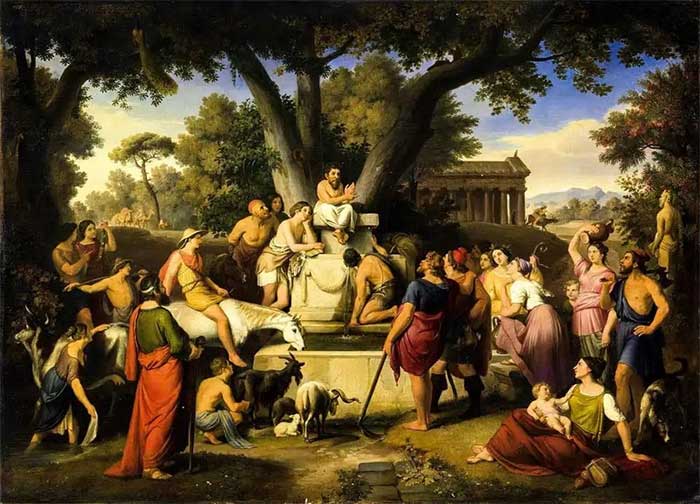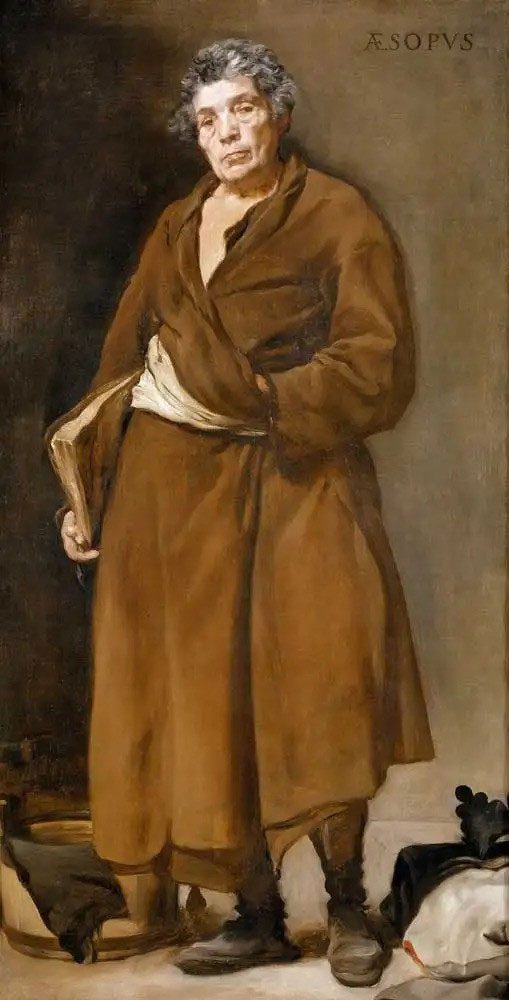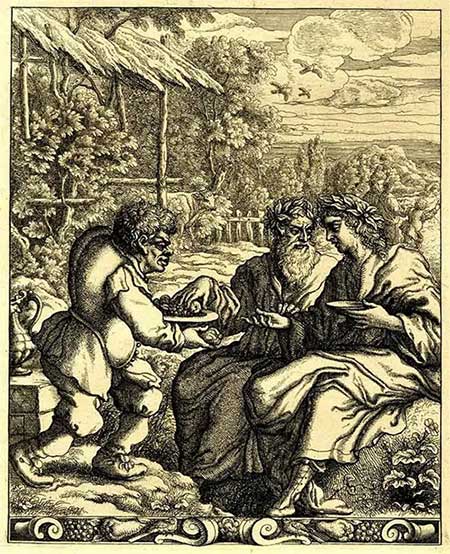Although globally recognized for tales such as “The Tortoise and the Hare” and “The Ant and the Grasshopper,” few people have a clear understanding of Aesop – the writer who created and shaped the fable genre long before the Common Era.
Dumb and Ugly?

Aesop’s storytelling skills made him an ambassador for Emperor Croesus. (Image: Thecollector.com).
Aesop’s fables are an ancient oral storytelling genre that serves both to entertain and convey moral messages and lifestyles succinctly. They exist across all cultures, and it is said that the first to create this literary form was Aesop, a Greek writer who lived around the 7th to 6th century BCE.
Three ancient scholars who mentioned Aesop’s existence are historian Herodotus (484 – 425 BCE), philosopher Plutarch (46 – 119 CE), and biographer Laertius (circa 3rd century CE).
Although the recorded dates of Aesop’s birth and death vary, they all fall within the range of 630 – 570 BCE. He was likely born in Mesembria, Thrace, and later moved to the island of Samos as an adult.
According to legend, Aesop was extremely unattractive, with a large head, bulging eyes, a potbelly, bandy legs, a short stature, and dark skin… to the point that he was regarded as “a flawed creation of the god Prometheus, molded in a half-dream state.” Possibly due to his insecurities, Aesop refrained from speaking with others in his youth, leading to rumors that he was mute.
However, Aesop was very intelligent. Once, two thieves exploited his silence to accuse him of theft. Although he could not verbally defend himself, Aesop managed to drink a large amount of water and then vomited everything to prove he had not stolen the figs.
Many of Aesop’s fables feature gods from Mount Olympus as characters. It is likely that this writer was deeply reverent toward the gods, and this reverence gradually gave him the courage to voice his thoughts and share his own stories.
There is a folk tale that one day, while still mute, Aesop encountered a priestess of the goddess Isis who had lost her way. To guide her, Aesop felt compelled to speak, and his kind act moved the priestess, who rewarded him by teaching him how to construct and tell stories.
According to the philosopher Himerius (315 – 386 CE), Aesop had a melodious but somewhat high-pitched voice, close to a female pitch. This was likely due to many years of silence, causing his throat and vocal cords to develop late and in a distorted manner.
As time passed, ancient scholars increasingly mentioned less about Aesop’s appearance. While they still acknowledged he was very ugly, they tended to refrain from mockery and gradually portrayed Aesop as a wise elder.
Origin as a Slave
In various accounts of Aesop, one common point is that he is believed to have been born a slave. Before the Common Era, Greece had two types of slavery: those born into slavery (the offspring of slaves) and those who became slaves due to circumstances. Historian Herodotus believed that Aesop belonged to the second category.
He was captured as a prisoner during a war in Thrace along with a famous courtesan of the time, Rhodopis, who would marry the king of Egypt and become the prototype for “Cinderella.”
Some sources suggest that Aesop was the child of a slave couple owned by a philosopher named Xanthus. Later, he was sold to a man named Iadmon and eventually gained his freedom because his new master recognized his talents.
There is also a story that Aesop was freed by his first master, Xanthus. Additionally, another tale suggests that Xanthus did everything to keep Aesop. Through his wisdom and logical arguments, Aesop successfully pressured the ruling class to compel Xanthus to grant him freedom and acquire citizenship.
The reason Aesop was determined to obtain freedom was that only free citizens were allowed to become public speakers, presenters, and storytellers. After escaping the life of slavery, Aesop traveled widely, telling stories and advising those in need.

The father of Aesop’s fables, painting by Diego Velázquez (1599 – 1660). (Image: Thecollector.com).
African Roots?
As centuries passed, the stories about Aesop’s origins and life multiplied and became more ambiguous. In the 13th century, Eastern Roman Empire scholar Maximus Planudes (1260 – 1305) compiled earlier records about Aesop and edited them into a fictional literary work titled “The Aesop Romance.”
Based on the name Aesop, Planudes asserted that the father of fables was from Africa, specifically of Ethiopian descent (a country in East Africa). This is because the pronunciation of Aesop closely resembles the Greek term for Ethiopia, “Aehiopian.”
Planudes’ assertion garnered support, as many of Aesop’s fables feature animals not native to Greece, such as elephants, camels, and monkeys. However, some dismissed this, claiming Aesop learned about these African animals through oral stories from Egypt and Libya.
Despite these explanations, in the 18th and 19th centuries, Britain firmly claimed Aesop was an African. In William Godwin’s (1756 – 1836) collection “Fables Ancient and Modern,” Aesop is illustrated as a black man, noted as being of Ethiopian descent. Some British sculptors created statues of Aesop as a black man, and mints produced coins depicting Aesop in this manner.
Today, scholars vehemently oppose using the pronunciation of Aesop’s name as a basis for determining his origin. Although it is impossible to confirm Aesop’s roots, it is known that the endpoint of his journey as a speaker was Delphi.

Aesop and his masters, painting by Francis Barlow (1626 – 1704). (Image: Thecollector.com).
After many years of storytelling and helping others, Aesop’s fame reached the ears of Emperor Croesus (7th – 6th century BCE). Impressed by Aesop’s oratory skills, Croesus decided to appoint him as an ambassador.
With diplomatic duties, Aesop traveled to various cities and successfully aided Croesus in building diplomatic relations. Ultimately, Croesus assigned Aesop the most challenging task of crossing the sea to Delphi to connect with the Delphians.
Aesop set off for Delphi with a great deal of gold and silver, but he soon became disappointed as the Delphians were both excessively greedy and disrespectful toward the gods that the Greeks revered. Angered, he sent all the gold back to Emperor Croesus and was met with hostility from the Delphians, who threw him off a cliff, leading to his demise.














































